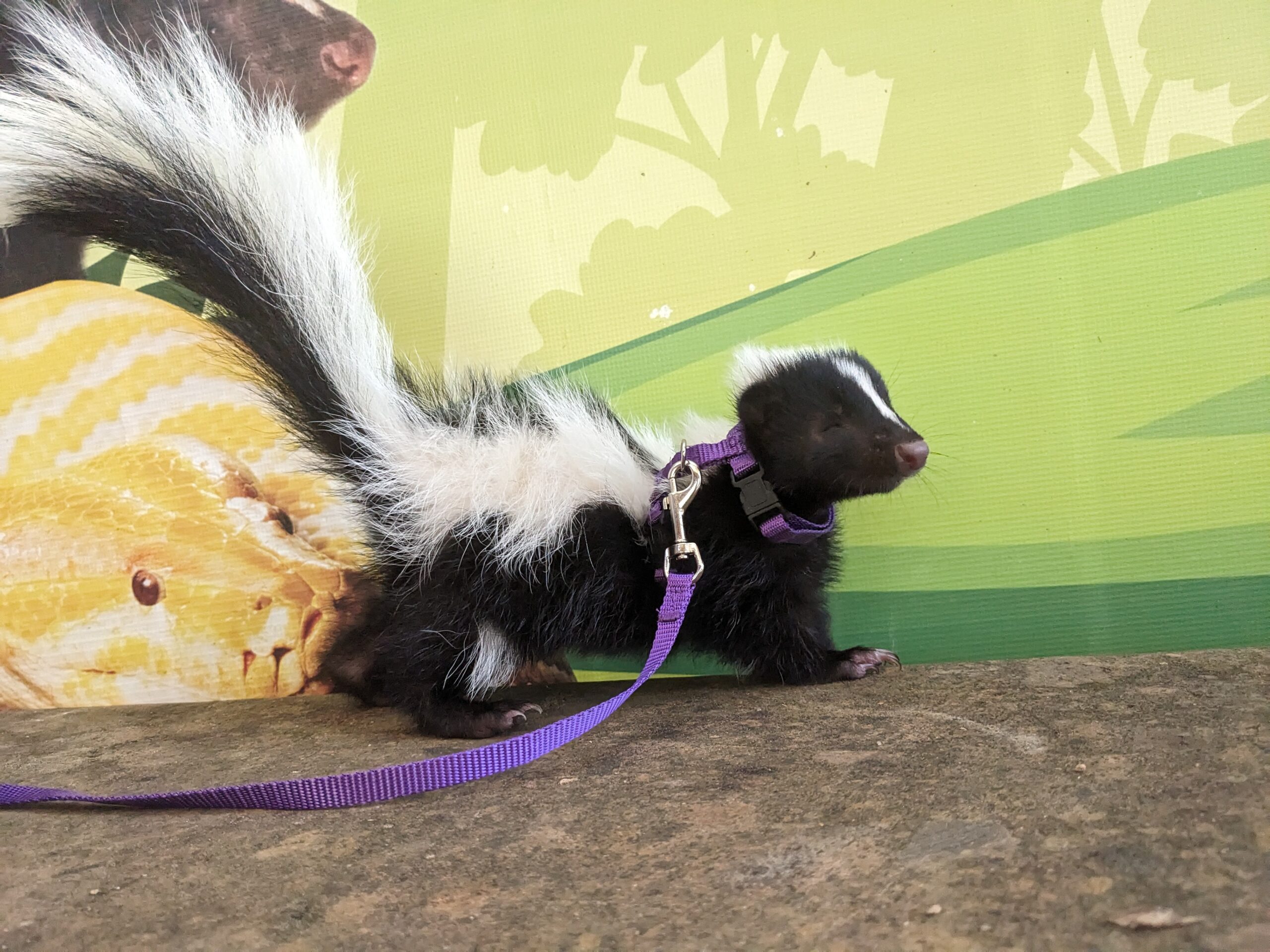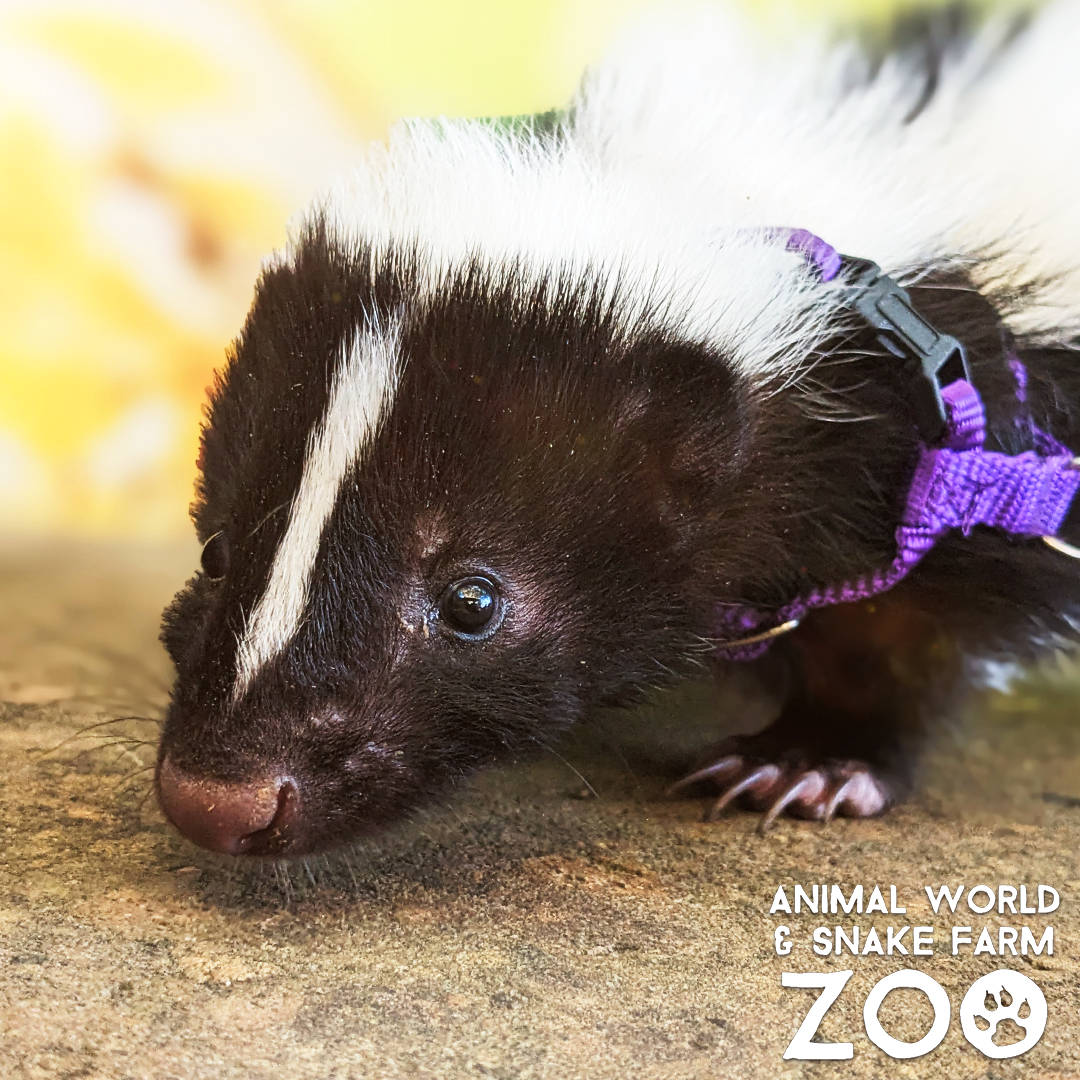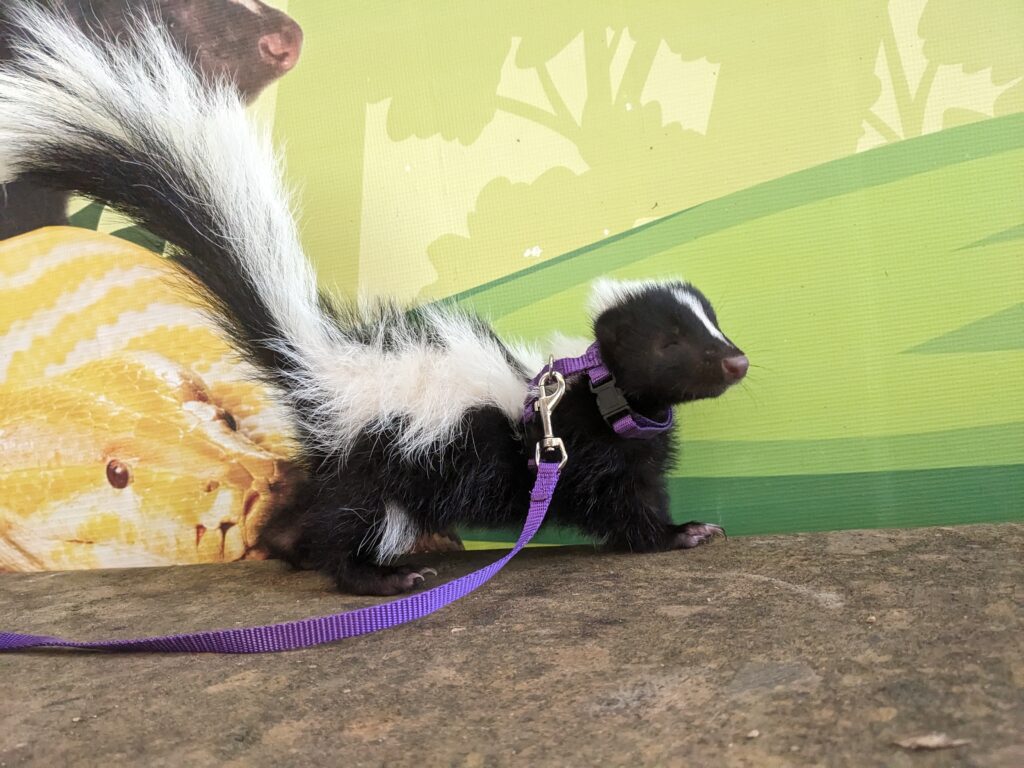Everything You Need to Know About Skunks: Diet, Behavior, and Fun Facts
Skunks are fascinating creatures known for their distinctive black-and-white fur and notorious ability to spray a foul-smelling liquid as a defense mechanism. These nocturnal animals are often misunderstood but play an essential role in their ecosystems. In this blog, we will delve into the world of skunks, exploring their diet, behavior, and some fun facts that might surprise you.
All About Skunks: Habitat and Lifestyle
Skunks are primarily found in the Americas, from Canada to South America. They thrive in various habitats, including forests, grasslands, and urban areas. These adaptable animals can often be spotted in wooded areas, fields, and sometimes in suburban backyards.
Skunks are solitary creatures, typically coming together only during the breeding season. They are crepuscular and nocturnal, meaning they are most active during dawn, dusk, and nighttime. During the day, skunks take refuge in caves, which they may dig themselves or take over from other animals. These caves provide them with a safe place to rest and raise their young. 
One of the most exciting aspects of skunks is their infamous defense mechanism. When threatened, skunks can spray a potent, foul-smelling liquid from glands near their tail. This spray can reach up to 10 feet and is an effective deterrent against predators. The spray contains sulfur-based compounds called thiols, responsible for the strong odor.
In addition to their spraying ability, skunks have sharp claws used for digging and foraging. They are omnivores, feeding on a varied diet that includes insects, small mammals, birds, fruits, and vegetables. This diverse diet helps them adapt to different environments and food availability.
Skunks play a crucial role in controlling insect and rodent populations, benefiting the ecosystems they inhabit. Despite their reputation for being smelly, skunks are relatively docile animals and only spray when they feel threatened.
What Does a Skunk Eat?
Skunks are opportunistic omnivores with a varied diet that helps them thrive in different environments. Understanding what skunks eat can illuminate their role in the ecosystem and their adaptability.
In the wild, skunks primarily feed on insects and small animals. They are particularly fond of beetles, grasshoppers, and crickets, which provide a significant portion of their protein intake. Skunks are also known to eat small mammals such as mice, voles, birds and their eggs. This diet helps control the population of these animals, making skunks an essential part of their ecological community. 
Fruits and vegetables are also a crucial part of a skunk’s diet. They often forage for berries, apples, and other fruits, especially during the fall when these foods are abundant. Skunks also consume various plants and vegetables, which add essential nutrients to their diet and help them survive in different habitats.
In urban areas, skunks may scavenge food from garbage cans, compost piles, and pet food left outside. This behavior can sometimes lead to conflicts with humans, but it highlights the skunk’s adaptability and resourcefulness in finding food. During winter, skunks reduce their activity and rely on fat reserves built up during warmer months. They may occasionally come out to forage, but their primary focus is conserving energy and staying warm.
Understanding Skunk Spraying
A known characteristic of skunks is their ability to spray a potent, foul-smelling liquid as a defense mechanism. This unique adaptation helps skunks protect themselves from predators and is a fascinating aspect of their behavior.
When threatened, a skunk will first try to warn off the predator by stomping its feet, hissing, and raising its tail. If these warning signs are ignored, the skunk will resort to spraying. Glands near its tail’s base produce the skunk’s spray. This liquid contains sulfur-based compounds called thiols, responsible for the firm, unpleasant odor.
 A skunk can accurately spray its target from up to 10 feet away, and the smell can be detected farther away. The spray can cause temporary blindness and irritation if it gets into the eyes, making it a very effective deterrent. Interestingly, skunks have enough spray for about five to six uses and need time to replenish their supply, so they use this defense mechanism sparingly.
A skunk can accurately spray its target from up to 10 feet away, and the smell can be detected farther away. The spray can cause temporary blindness and irritation if it gets into the eyes, making it a very effective deterrent. Interestingly, skunks have enough spray for about five to six uses and need time to replenish their supply, so they use this defense mechanism sparingly.
Skunk spraying is not just a random act but a last resort used only when the skunk feels genuinely threatened. Most animals quickly learn to avoid skunks due to this powerful defense, which helps protect the skunks from becoming prey.
In addition to their spraying capabilities, skunks communicate with each other through various sounds and body language. A baby skunk, a kit, makes different sounds to communicate with its mother, such as squeaks and chirps. These vocalizations help the kits stay close to their family and alert their mother to their needs.
Skunk Hairstyle and Other Fun Facts
Skunks are not only fascinating because of their defense mechanisms and dietary habits, but they also have a range of exciting and unique characteristics that make them stand out in the animal kingdom.
One quirky fact about skunks is their distinctive fur pattern, which has inspired a popular term known as the “skunk hairstyle.” This term refers to a hairstyle where a streak of white runs through dark hair, mimicking the classic black-and-white coloration of skunks. This fun cultural reference shows how skunks have made their mark not just in nature but also in popular culture.
Beyond their fur patterns, skunks have several other exciting traits. For instance, skunks are excellent diggers. They use their strong claws to dig for insects and create burrows. These caves provide shelter and a place to raise their young, called kits. Skunk kits are born blind and helpless, relying entirely on their mother for care. As they grow, they venture out of the burrow and learn essential survival skills.

As mentioned earlier, skunks also have a surprisingly diverse diet that includes insects, small mammals, fruits, and vegetables. This omnivorous diet helps them adapt to various environments and food availability, making them highly adaptable creatures.
Another fascinating fact about skunks is their relatively calm demeanor. Despite their potent defense mechanism, skunks are generally non-aggressive and prefer to avoid confrontation. After giving several warning signs to potential threats, they only spray as a last resort. This behavior demonstrates their preference for peaceful coexistence rather than aggression.
Skunks are also crucial to the ecosystem. Controlling insect and rodent populations helps maintain a balance in their habitats. Their foraging behavior also helps with seed dispersal, contributing to plant growth and biodiversity.
Conclusion
Skunks are genuinely remarkable animals with unique traits and behaviors that make them fascinating to study and observe. From their distinctive black-and-white fur and infamous spraying defense mechanism to their varied diet and surprisingly calm demeanor, skunks play a vital role in their ecosystems and offer much to learn for anyone interested in wildlife.
Understanding what a skunk eats, how it protects itself, and the interesting facts about its lifestyle can deepen our appreciation for these often misunderstood creatures. Whether you’re curious about their role in controlling insect populations or their cultural impact through terms like the “skunk hairstyle,” there is always something new about skunks.

